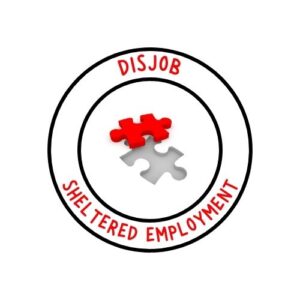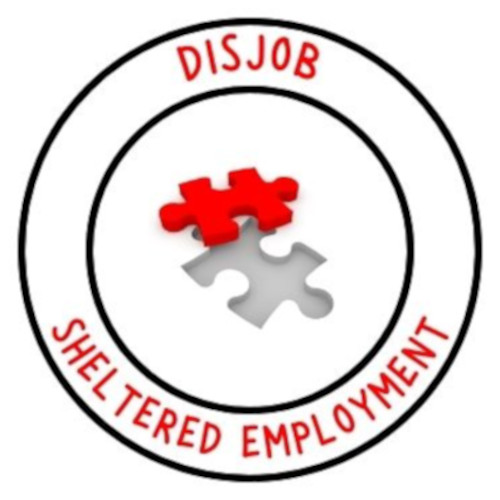 Project Overview
Project Overview
With this project, we want to design a European Quality Framework that unifies the model of sheltered employment in all the countries that make up the European Union, based on the information provided by each of the members that make up this consortium. To this end, we will select the positive aspects of each of the employment policies currently being applied, and make proposals for improvement in those aspects that are not producing good results.
We’ll implement the following activities: to elaborate a “Record Sheet” for the research of the sheltered employment model, in which each partner can collect the same data in their respective countries. To design a “Comparative Chart” of the results obtained by each partner. Conduct satisfaction surveys for people with disabilities working in special employment centres, and survey for employers. Report to establish the basis for the creation of a European quality framework for sheltered employment.
Thus we expect to achieve the following results: analysing the comparative table and the results of the surveys, we will draw up a report establishing the parameters to be taken into account for the development of this European Quality Framework that unifies an effective sheltered employment model and aims at equal opportunities in access to employment for all people with disabilities in Europe. This report will be presented publicly, to raise awareness among the socio-political agents involved.
Objectives and Goals
With this project we want to develop a European quality framework that unifies the model of sheltered employment in all the countries that make up the European Union, bringing together the positive aspects of each of the employment policies that are currently being applied, and improving those aspects that are not working well.
The overall objective is:
– Produce a report outlining the needs and proposals for the creation of a European quality framework for sheltered employment in Europe.
The specific objectives are:
-To know the situation of sheltered employment in the countries that form the consortium of this project.
-Sharing experiences and good practices between partner countries
-Develop tools to measure the effectiveness of different models of sheltered employment.
– Raise awareness and promote the improvement of employment conditions for people with disabilities.
-Describe the most appropriate sheltered employment models according to the type of disability.
-To seek the involvement and collaboration of the Public Administrations and the business sector in the quality integration of people with disabilities.
The priority of this project is Inclusion, in our case, the inclusion of people with disabilities in access to employment on equal terms. The current employment rate is 50.6% (53.3% for men and 48.3% for women with disabilities), compared to 74.8% for people without disabilities, and the unemployment rate for people with disabilities aged between 20 and 64 is 17%, compared to 10% for people without disabilities, which prevents many people with disabilities from leading an independent and active life.
And with regard to diversity, this project is directly linked to the objectives proposed in the European Strategy on the Rights of Persons with Disabilities 2021-2030, specifically the objective of achieving a dignified standard of living and independent living. Independence, quality social services and employment, accessible and inclusive housing, participation in lifelong learning, adequate social protection and the strengthening of the social economy are indispensable elements for all people with disabilities to enjoy a dignified life.
Target audiences and beneficiaries
It is necessary to understand what sheltered employment is in order to justify the target groups of this project. This term refers to those jobs that are created to be filled by people with disabilities, who have difficulties in accessing the ordinary labour market.
They are characterised as paid and productive employment with special features such as:
– The adaptation of the workplace to the individual.
– Flexibility in carrying out daily work.
– Knowledge of the characteristics of the group of people with disabilities with whom they work.
– The provision of the necessary resources for the social and labour integration of its workers.
A priori it may seem an effective model for inserting people with disabilities into the labour market, and indeed the basis of these types of employment is necessary, but the reality is that sheltered employment has very inferior working conditions to those found in ordinary employment, in terms of salary, type of contract and above all in the jobs offered, as they tend to be low-skilled jobs, mainly related to the service sector and which not all people with disabilities can access due to a lack of adaptations in the jobs.
Therefore, in this project we will have 3 target groups, directly or indirectly.
The first group will be the political and social agents of the public administrations that elaborate and approve the active employment policies at local, regional and/or national level (of each of the partners that make up this consortium), to whom we want to make them aware of the conditions in which sheltered employment is developed and sensitise them so that they become involved in improving the regulations that govern this type of employment.
The second group are the employers, those companies that opt for the creation of a special employment centre with a business perspective. That is to say, they supposedly create this type of company to support people with disabilities in finding employment, but in the end their aim is to make money, losing sight of the conditions of the jobs they offer and the conditions under which these jobs are carried out. Making them aware of the European quality framework on sheltered employment that we are going to develop will encourage the involvement of these companies in improving the working conditions of this type of employment.
Finally, but being the most important group in the development of the project, people with disabilities will be our support, reference and guide in the elaboration of the report, as the main beneficiaries of the new model of sheltered employment, which will aim to ensure that the rights of people with disabilities are fulfilled in the workplace and giving them the opportunity to participate independently and autonomously in society.

 Erasmus+ KA210-ADU project
Erasmus+ KA210-ADU project